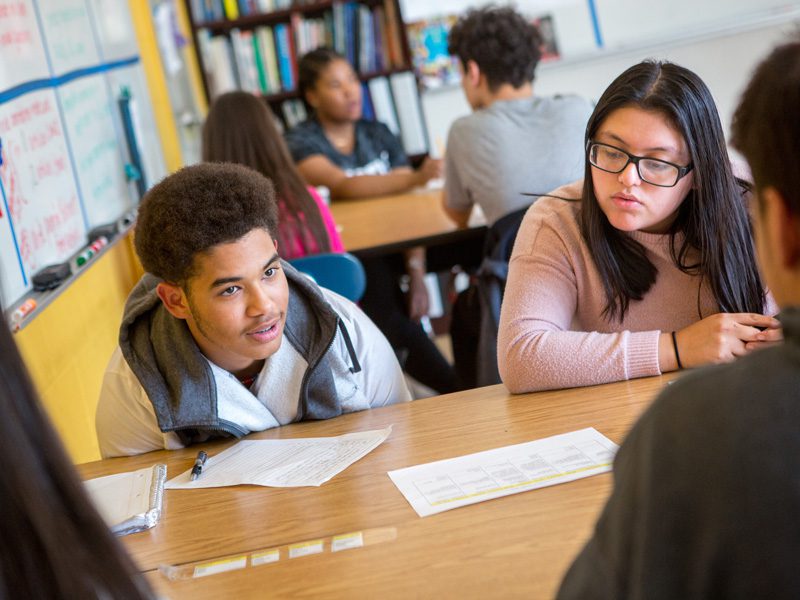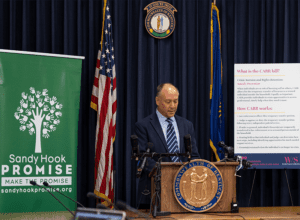Going back to school for students is often a time of excitement. A new year filled with new friends and new opportunities. But this year, students’ enthusiasm is also tempered by their concerns.
It’s not just being worried about the next COVID variant, or whether students will wear masks, but about how students will engage with their peers in person after being socially distanced for more than a year. And the potential for teenagers with mental health concerns to fall through the cracks.
Members of our National Youth Advisory Board (YAB) recently sat down for a panel discussion to share their own experiences – excitement, hopes, and fears – for the new school year. They provided invaluable insights into what teenagers are facing today and the kind of support and resources they would like to see in place when they return to school.
“My biggest worry is all of the kids who spent the entire last year online are just going to have a ton of difficulty readjusting and socializing again,” said Teresa Skripek, a member of the YAB from Mississippi.
Students are already reporting more mental health concerns to our National Crisis Center than ever before, including depression, isolation, bullying, and anxiety. Teenagers with suicidal thoughts now make up nearly half of all the reports we receive via the Say Something Anonymous Reporting System.
The Social Adjustment
Members of the panel who have already begun classes said they were excited to be in a room sitting next to their peers after so long.
“It’s like everyone has been so socially starved. We’re going out and meeting people and talking to each other like never before,” said Dyuthi, a member of the YAB from California. “It’s incredible. I never realized just how difficult it was to learn online.”
Some students, particularly those who missed out on important milestones, said the experience has been more surreal.
“There are people who have walked up to me that I didn’t even recognize. It’s been years,” said Jordyne (JJ), a YAB member who goes to school in North Carolina. “We missed the entire middle school graduation experience. And now all of a sudden we’re in high school.”
Dr. Rachel Masi, clinical psychologist and research director for Sandy Hook Promise who served as the moderator for the discussion, noted that besides physical changes, students can experience tremendous changes both mentally and emotionally after one summer at camp – let alone more than a year of being socially isolated.
“People have grown a lot and learned a lot about themselves during the past year,” said Lena, a member of the YAB who lives near Parkland, Florida. “And many have grown more comfortable with who they are. I wonder if people will still feel comfortable with who they are now when they enter a social environment they haven’t been to in so long, or if they’ll be pressured to return to their old self.”
Students in the Shadows
Drew, a YAB member also from Florida, said he is most concerned about the students who don’t typically get a lot of attention. The athletes, the scholars, and the troublemakers are usually on the teacher’s radar, he said, But it’s those in the middle who go unseen that he worries about the most.
“Those are the students that we really need to reach out to this year,” he said. “We need to help those students make more connections, to feel included in the school community.”
That’s where he said the Start With Hello program can help.
“It can be as simple as walking up to someone and saying hello,” Drew said.
Aashi, a YAB member from California, noted that even those who haven’t been diagnosed with a mental health issue can still suffer from feelings of anxiety and depression that can make it hard to focus. Just recognizing that, having some understanding, and being heard, she said, can have a huge impact.
“As teenagers, we’re not really good at expressing how we feel,” she said. “A little bit of patience and grace would be appreciated.”
How We Can Help
While most schools often emphasize sports and athletic achievements, acknowledging the many talents that other students have can also go a long way to making them feel connected, according to YAB member Medha from Ohio.
“It would help the students who aren’t that great at sports feel more valued,” she said. “Everyone is good at something. I know as an immigrant, I often felt left out and not heard.”
For students who aren’t involved in extracurricular activities, a good relationship with an educator or Trusted Adult can also be a lifeline, Drew noted.
“Even if they’re not involved, students still have to interact with their educators,” he said. “Creating a connection with a teacher can go a long way to helping someone feel seen. I think it’s the best way to help the students in the middle.”
Providing five or 10 minutes during the beginning of the class to allow for an open conversation with students has also been suggested by both the panelist and experts alike. Whether it’s asking a question about what the students did during the summer or how they are feeling that day. And making sure those students “in the middle” have an opportunity to speak and be heard.
“There are a lot of things that teachers can do to foster a more inclusive environment in their classroom,” said Lena.
While some of these solutions may take some courage on the part of students and educators, the results are well worth it, Dyuthi said.
“In high school, we’re always comparing ourselves to each other,” she said. “But try to be yourself. You won’t regret it two years from now. Be the person you are, and the chances are you’ll be okay. You’ll love the person you become. You’ll be amazing.”
Watch the Webinar
If you’d like to hear more about what the teenagers had to say, watch a recording of the full webinar.
Take Action
Research has proven that our no-cost Know the Signs programs effectively teach youth and adults how to prevent school violence, shootings, and other harmful acts. Learn how you can implement them in your school or district.


